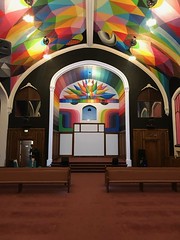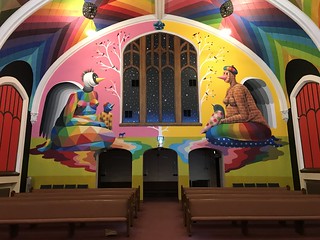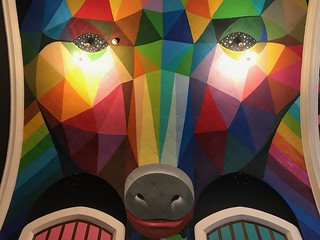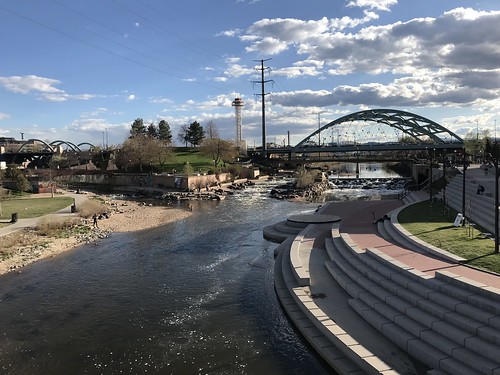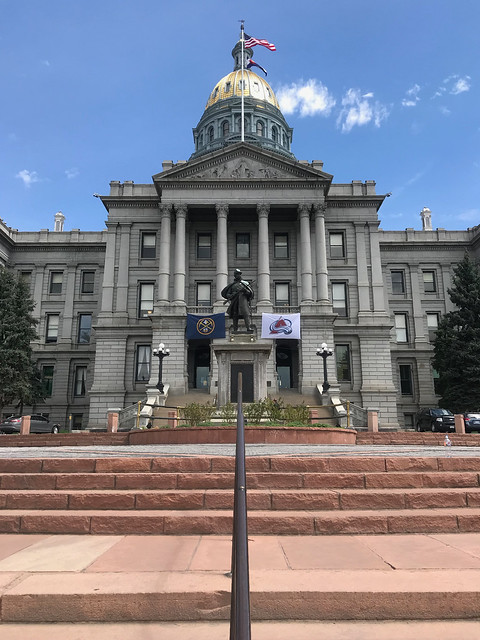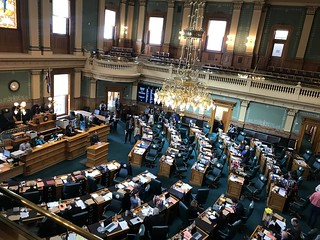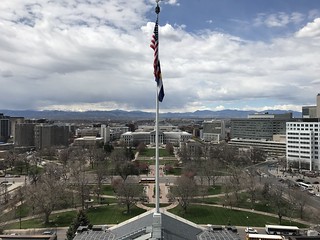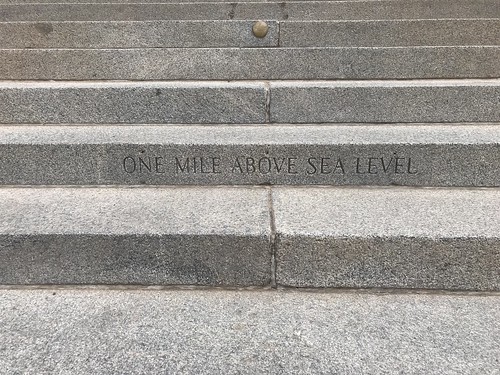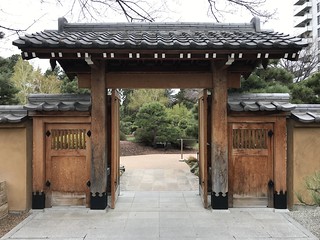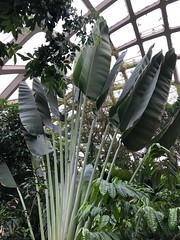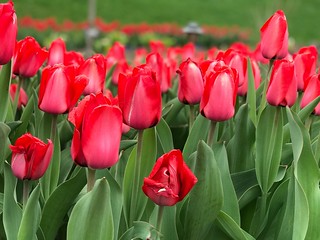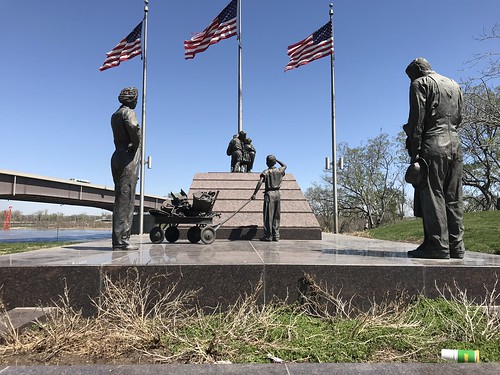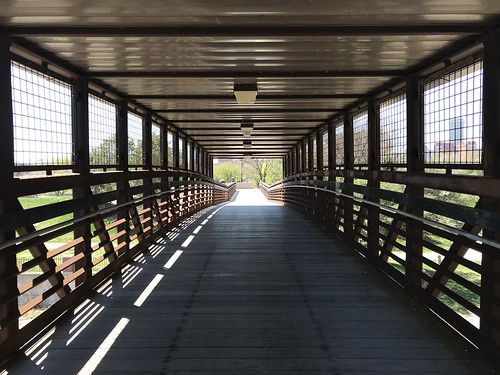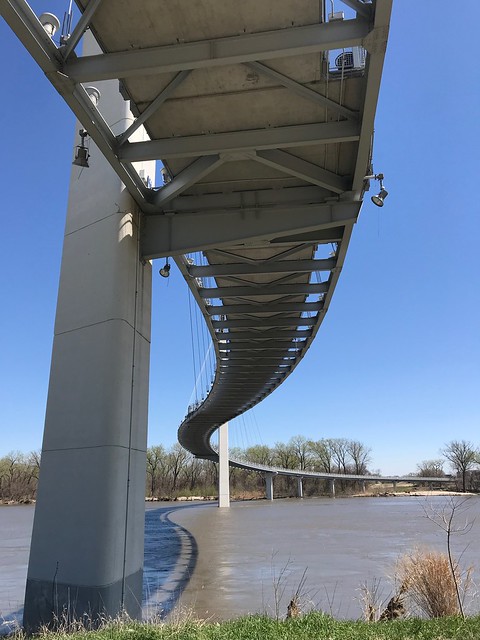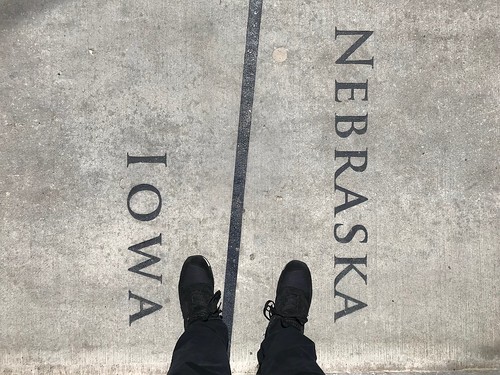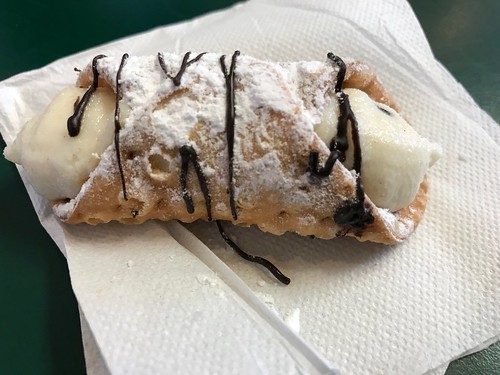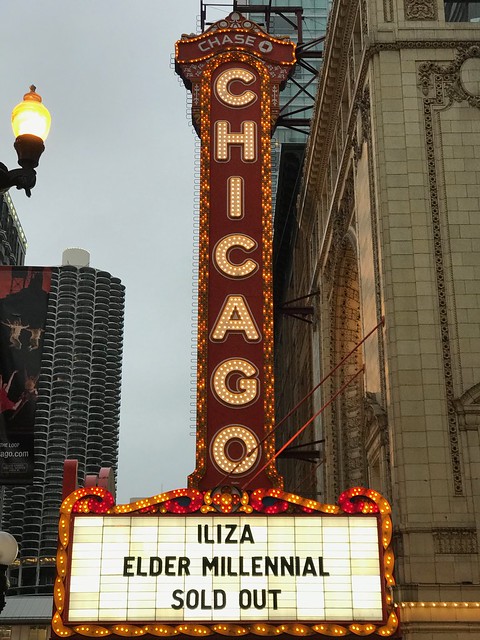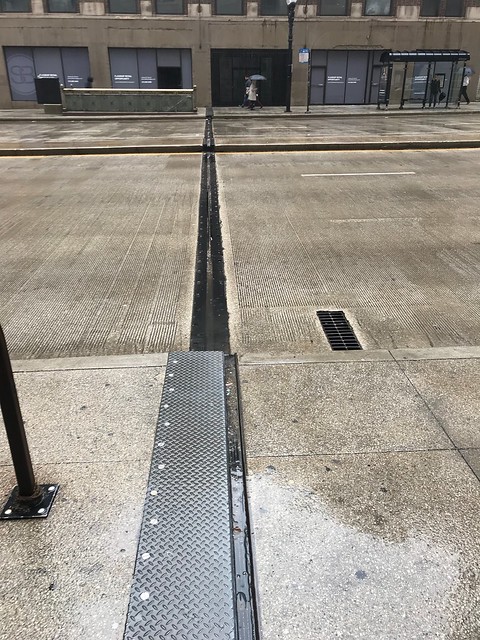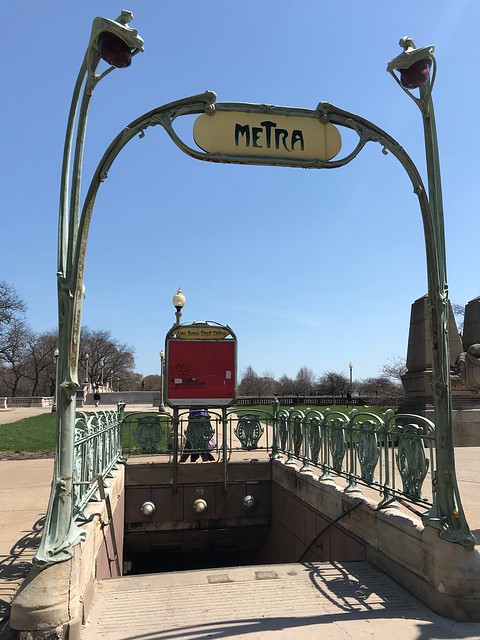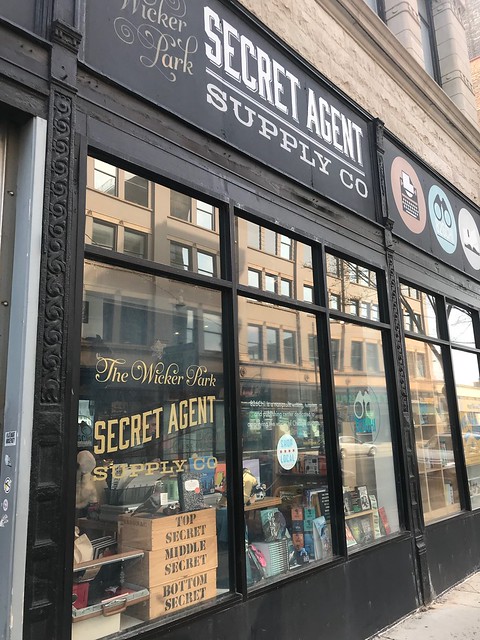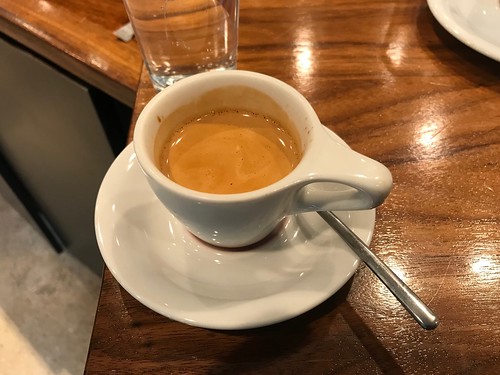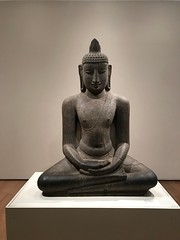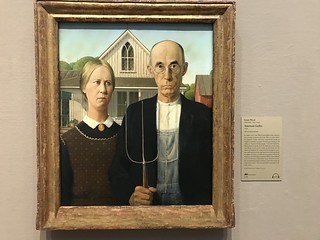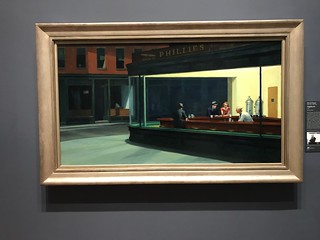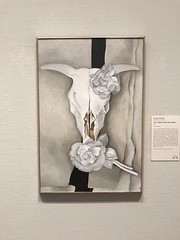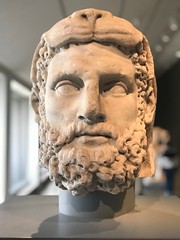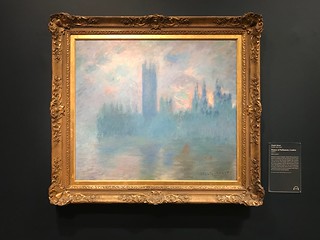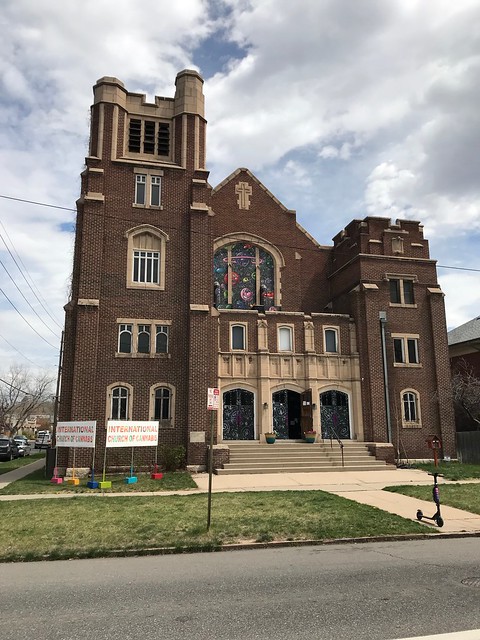
As a Pink Floyd song ended, the psychedelic animation on the interior walls and ceilings faded into a rotating star field, and the audio of Steve Jobs’ “Here’s to the crazy ones” played. Then a song by The Doors came on along with more trippy visuals.
It was easy to forget I was sitting on a church pew as these visuals filled with room accompanied by 1960’s hippie rock music. This wasn’t your typical church: it’s the International Church of Cannabis.
Most of the information online about the place is wildly out of date, but essentially if you’re not a church member you can pay $15 for the 30 minute Beyond guided meditation and light show. This takes place during the public hours on Fridays and weekends. There’s no free entry to the church space anymore for non-members. Hey, everyone has to pay their bills.
After the show you can take photos of the colorful murals lining the walls and ceilings of the main space seen in the photo gallery above. Even though the visuals are projected over these murals, for the most part they’re not visible during the light show.
Members of the church are called Elevationists and you can read more about their beliefs here. The tl;dr version is they treat marijuana as a sacrament but have no strict dogma. No marijuana consumption is allowed inside during public hours.
Despite the name there’s nothing “international” about this church, they only have a single congregation. It’s very much something you’d only find in Denver.
The church is located in the sleepy Washington Park (aka “Wash Park”) neighborhood, a short walk from the Alameda light rail station.
My recommendation: While I can’t tell you if the religion of Elevationism is right for you, if you want to see a light show timed to 1960’s music and see some amazing murals all in one place, pay a visit to the International Church of Cannabis while visiting Denver.

